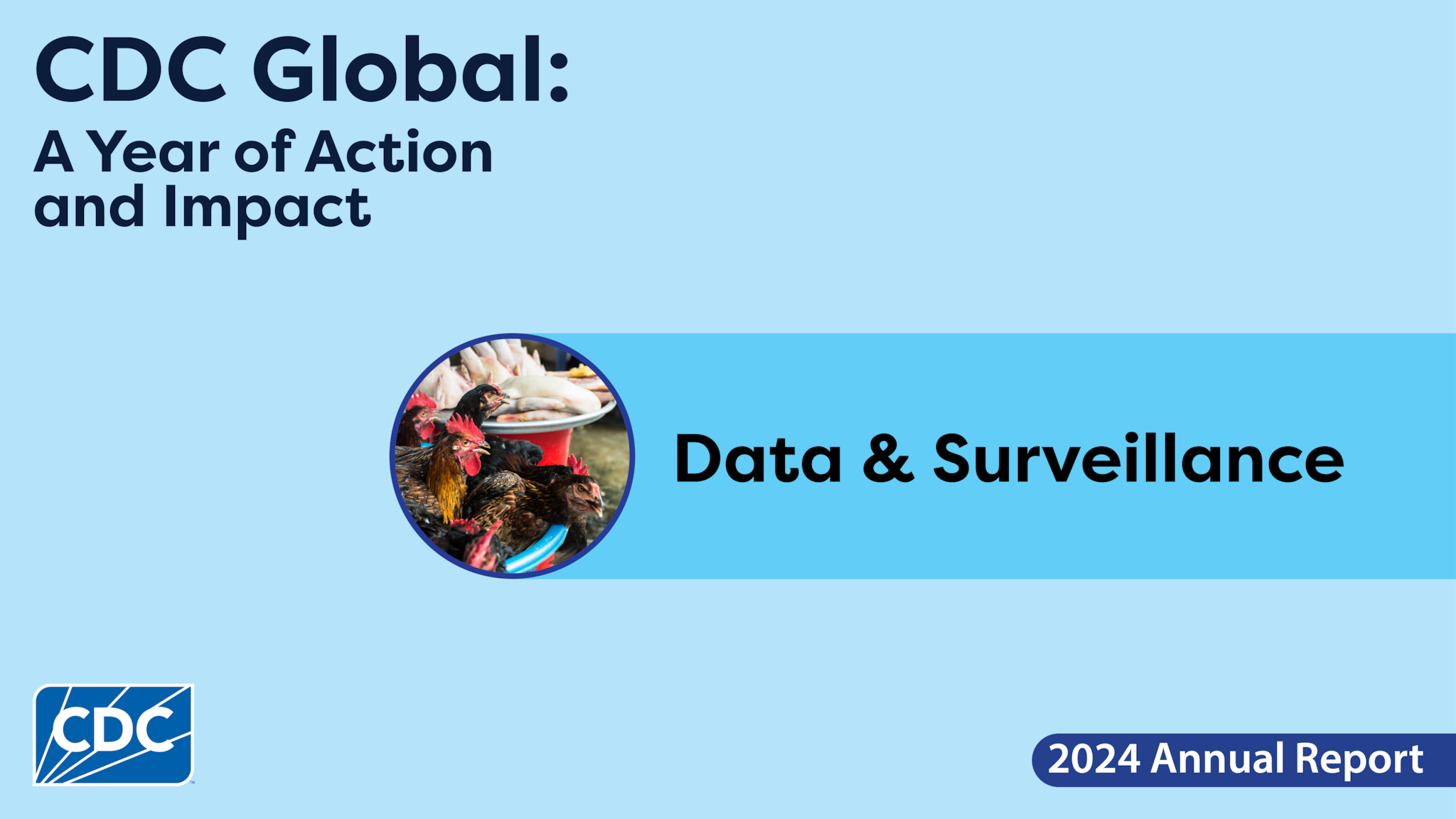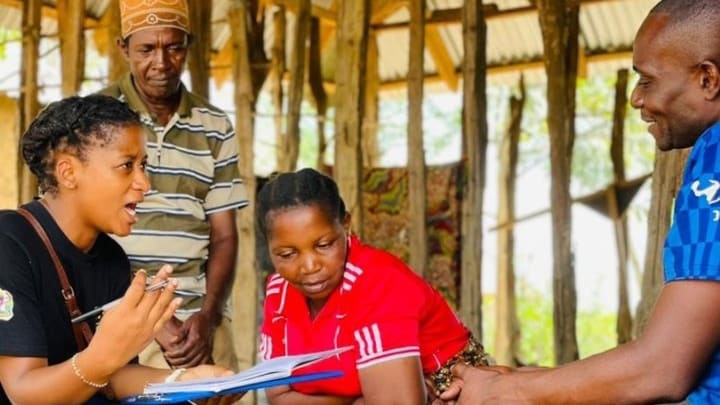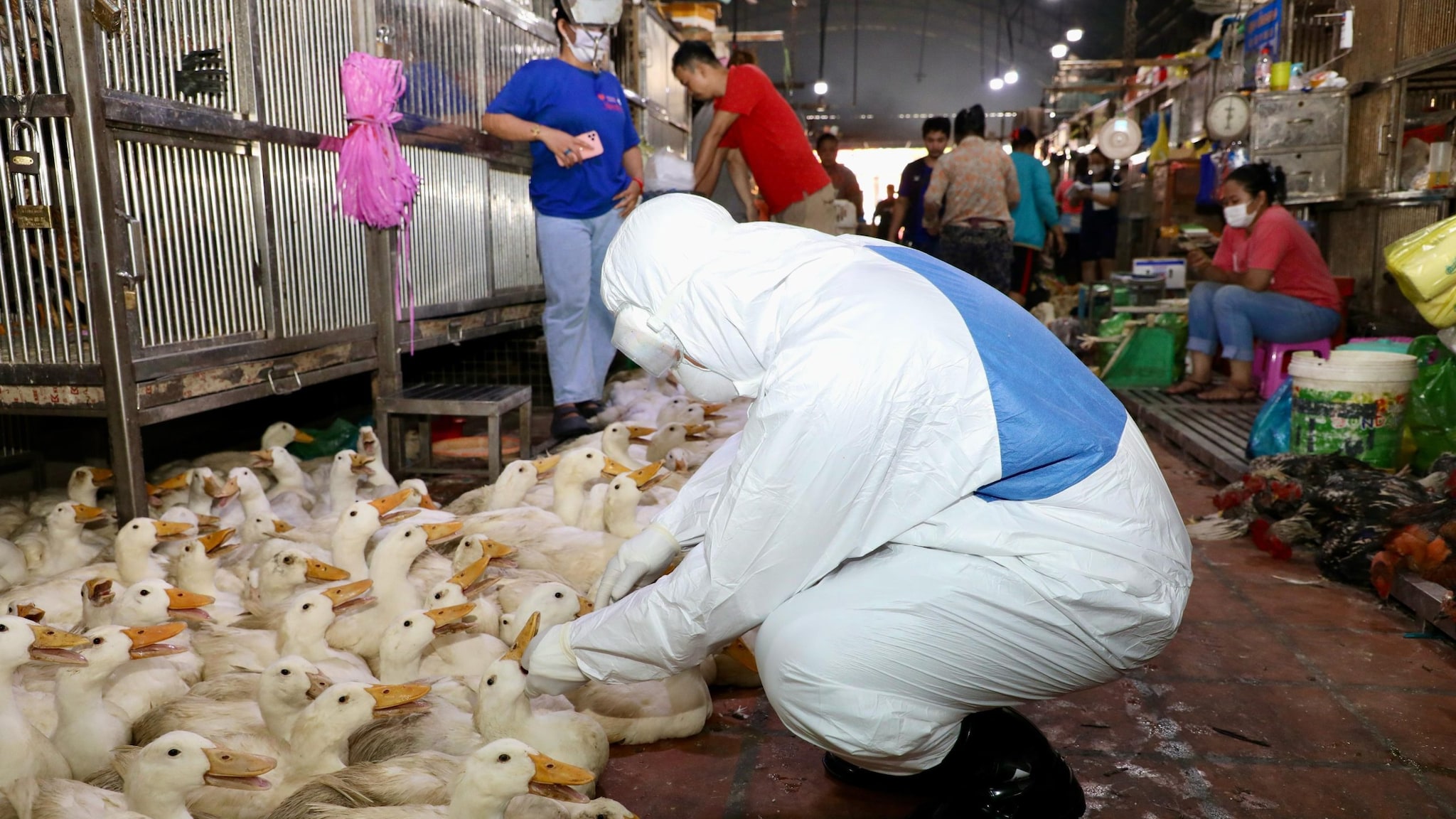At a glance
In 2024, CDC strengthened core data and surveillance capabilities to find and face emerging and re-emerging health threats.

Insights for action

CDC plays a leading role in designing and implementing nationally representative country-led surveys, like Population-based HIV Impact Assessments (PHIA) that measure the impact of HIV treatment and prevention programs in PEPFAR-supported countries. During 2024, CDC worked with local and government partners to plan and implement 9 national and sub-national PHIAs in 7 countries.
PHIAs provide powerful insights that allow countries to focus efforts where they are most needed. For example, results from Tanzania's CDC-supported PHIA published in 2024 showed that, of all people living with HIV aged 15 and over, 83% knew their status and 78% had reached viral suppression – up from 61% and 52% in the previous PHIA from 2018. These findings demonstrate the success of the government of Tanzania's response to HIV in partnership with PEPFAR.
Cross-border collaboration
CDC partners with the U.S.-Mexico Border Health Commission to address a wide range of priority infectious diseases along the U.S. and Mexico border. For example, healthcare authorities in the U.S. and Mexico work together to prevent further transmission of TB through the innovative Binational Border Infectious Disease Surveillance program (BIDS).
An example of this is BIDS' Imperial County and Mexicali Binational Tuberculosis (TB) Contact Investigation Project, which as of 2024, has successfully identified 150 TB cases with 559 binational contacts—people living, working, or studying in the neighboring country. This allowed for contacts to be tested and treated by local health departments or community health workers to stop TB spread. Diseases don't recognize borders, but strong binational cooperation can help address public health challenges and improve outcomes in both countries.
Innovative platforms
Candida auris, an emerging antimicrobial-resistant fungus, is often resistant to first-line treatment, and cases resistant to all available treatments have been identified in several countries.
CDC provided technical expertise to develop and pilot a protocol incorporating detection of antimicrobial-resistant fungi into WHO's Global Antimicrobial Resistance Surveillance System (GLASS). The GLASS-Fungi platform was officially launched by WHO in 2024, accepting Candida surveillance data from participating countries and providing valuable data to inform national and global strategies to prevent these dangerous infections.
Disease elimination
The malaria-causing parasite species spreading in Cambodia, Plasmodium falciparum, was resistant to the drugs used to fight and cure it. Through the President's Malaria Initiative (PMI), CDC helped evaluate the effectiveness of antimalarial drugs and incorporate drug resistance monitoring as part of routine malaria surveillance and response. Thanks to sustained U.S. Government efforts, there have been no documented cases of P. falciparum since January 2024. This lowers the potential risk of drug-resistant malaria spreading, including to the U.S.
Story Spotlight: Global data helps inform H5N1 bird flu risk assessments

Although H5N1 has been circulating among wild birds and poultry globally for decades, 2024 marks the first time it was detected in dairy cows in the U.S. Following detection in dairy cows in March, a human case was detected in April in a dairy farm worker in the U.S.
The specimen from the human case was sent to CDC, where H5N1 was confirmed. CDC’s experts also conducted genetic sequencing and analysis, including comparing the virus to other recent H5N1 human cases from Chile, Cambodia, and Vietnam. Comparing these contemporary viruses to previously circulating H5N1 bird flu viruses helps CDC monitor for genetic changes in the virus. This information is used to assess the risks to human health, including assessing severity and transmissibility, which informs U.S. Government preparedness and response. CDC has spent decades building surveillance infrastructure across the globe that detects novel influenza viruses worldwide to better protect Americans from these infectious disease threats.
This example illustrates how global data informs disease prevention and mitigation programs in the U.S. and other countries. It also underscores one of our global priorities: sharing sequences across human and animal sectors so we can compare them and assess evolving public health risks. CDC's contribution to sequencing around the world has built platforms that are applicable across diseases, strengthening public health understanding and response.